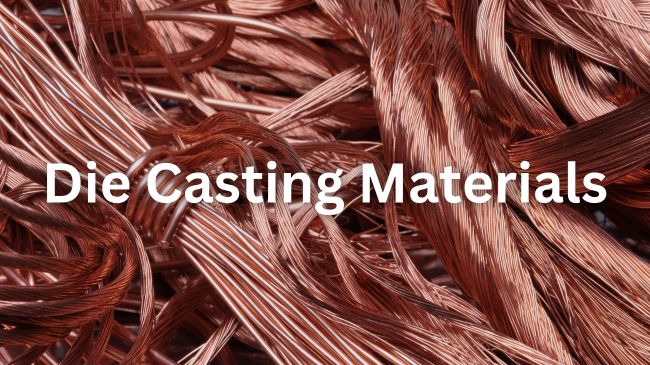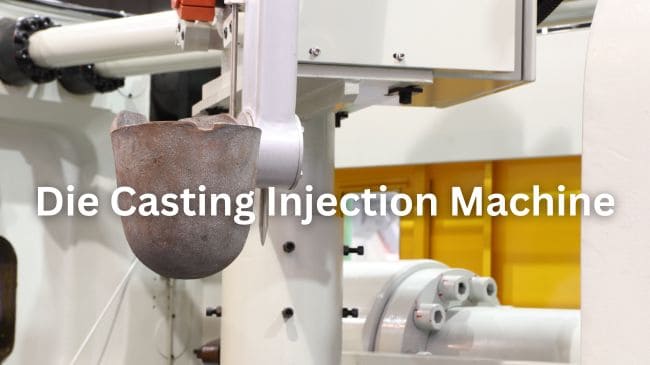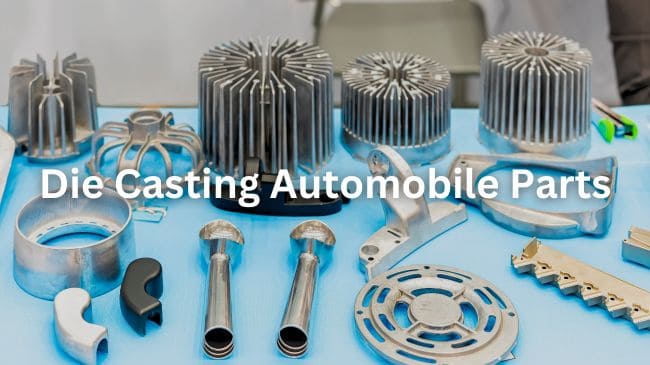Overview of Die Casting
Die casting is a metal casting process in which molten metal is injected into a mold under high pressure. This method is often referred to as high-pressure die casting and is widely used to produce intricate and precise metal parts efficiently. The use of non-ferrous alloys, known as die casting alloys, such as aluminum, zinc, magnesium, tin, copper, and lead, each offers unique properties like strength, weight, and corrosion resistance.
- Aluminum Die Casting: Popular for its lightweight and strength among various die casting products.
- Zinc: Offers excellent ductility and is commonly used in hot-chamber die casting.
- Magnesium: Known for being the lightest structural metal with excellent mechanical properties.
- Tin and Copper: Used depending on the application for specific casting alloys.
Common Steps in Die Casting
- Mold Creation: A mold, called a “die,” often a steel mold, is constructed from hardened steel.
- Injection: Molten metal is forced into the die cavity at high pressure—a process in which molten metal is injected into the die, often referred to as pressure die casting.
- Cooling: The metal cools and hardens to form the part.
- Ejection: The cooled part, also known as a die-cast part, is ejected from the die.
- Trimming: Excess material is trimmed off the part.
This die casting method is renowned for producing parts with high precision and complex geometries. Die casting is used to make automotive parts, electronic housings, and many other applications where precision and strength are essential.
Types of Die Casting Processes
Die casting is versatile and efficient, with various methods tailored to specific materials and product requirements:
- Hot-Chamber Die Casting:
- Uses metals with low melting points like zinc, magnesium, and lead.
- The process involves molten metal being drawn into a chamber where it is injected into the die at high pressure.
- Quick with fast cycling, ideal for small to medium-sized parts.
- Cold-Chamber Die Casting:
- Suitable for metals with higher melting points like aluminum and copper.
- Molten metal is ladled into the injection chamber, reducing the risk of thermal damage to the injection mechanism.
- Essential for larger parts and high-volume production.
- Low-Pressure Die Casting:
- Molten metal is pushed into the mold using lower pressure.
- Suitable for large, non-ferrous parts with high structural integrity.
- Vacuum Die Casting:
- Removes air from the mold to reduce porosity, thereby enhancing the strength and mechanical properties of the die-cast parts.
- Ideal for parts requiring pressure tightness, like hydraulic components.
- Squeeze Die Casting:
- Combines casting and forging with additional pressure to remove gas bubbles.
- Produces exceptionally strong and dense parts.
- Semi-Solid Die Casting:
- Metal is partially melted before injection into the metal die, reducing turbulence and avoiding shrinkage.
- Results in high precision and excellent surface finish.
Materials Used in Die Casting

Different metals are chosen based on their properties to meet various needs in die casting. Here are the common materials used in the manufacturing process:
- Aluminum Alloys:
- Lightweight, strong, and corrosion-resistant.
- Aluminum die casting is ideal for automotive parts, electronics, and household appliances.
- Zinc Alloys:
- Easy casting, low cost, and quality finishes.
- Ideal for small precision parts like gears and connectors.
- Magnesium Alloys:
- Lightweight with good machinability.
- Used in automotive and aeronautics to reduce weight.
- Copper Alloys:
- Excellent electrical and thermal conductivity.
- Used in electrical connectors and heat sinks.
- Tin-Based Alloys:
- Beneficial for low melting points and corrosion resistance.
- Used in specific applications like bearings and electronics.
Die Casting Machines and Equipment

To understand die casting, it’s essential to explore the machinery and tools involved:
- Hydraulic and Mechanical Systems:
- Hydraulic Systems: Control molten metal flow into the die with precision.
- Mechanical Systems: Handle mold movements and ejector pins, providing the force needed to keep the molds closed during metal injection.
- Furnaces and Melting Equipment:
- Types: Crucible and reverberatory furnaces used for melting metals with varying melting points.
- Function: Melting and maintaining metal at correct temperatures.
- Dies and Tooling:
- Metal Die: Made of hardened steel, comprising fixed and moving parts.
- Tooling: Used for shaping, injecting molten metal into the die, and ejecting metal parts.
Advantages and Applications of Die Casting
Advantages:
- Short lead time
- Cost-effective for large production batches
- High strength with excellent dimensional accuracy
- Smooth surface finish
- Corrosion resistance
Applications:

- Automotive: Die casting is used for making engine blocks, gearbox cases, and other components, providing both strength and lightweight properties.
- Consumer Appliances: Helps produce durable and precise parts for refrigerators, washing machines, and microwaves.
- Electronics: Benefits from die casting’s ability to create intricate, small parts with high precision.
- Aerospace: Uses die casting to produce components that need a good strength-to-weight ratio.
Common Issues and Quality Control in Die Casting
Defect Prevention:
- Control temperature and pressure during the process.
- Use quality raw materials and proper mold designs.
- Regular maintenance to avoid misalignments and other issues.
Surface and Dimensional Inspection:
- Use precise measuring tools such as calipers and micrometers.
- Routine visual inspections for surface and dimensional deviations.
Porosity and Leak Testing:
- Porosity Testing: X-ray inspection to reveal internal voids.
- Leak Testing: Applying pressure to check for air or fluid escape.
Die casting remains a critical process in modern manufacturing, offering numerous advantages and serving a wide range of applications. While sand casting is another traditional method, die casting provides superior precision and efficiency for high-volume production.
